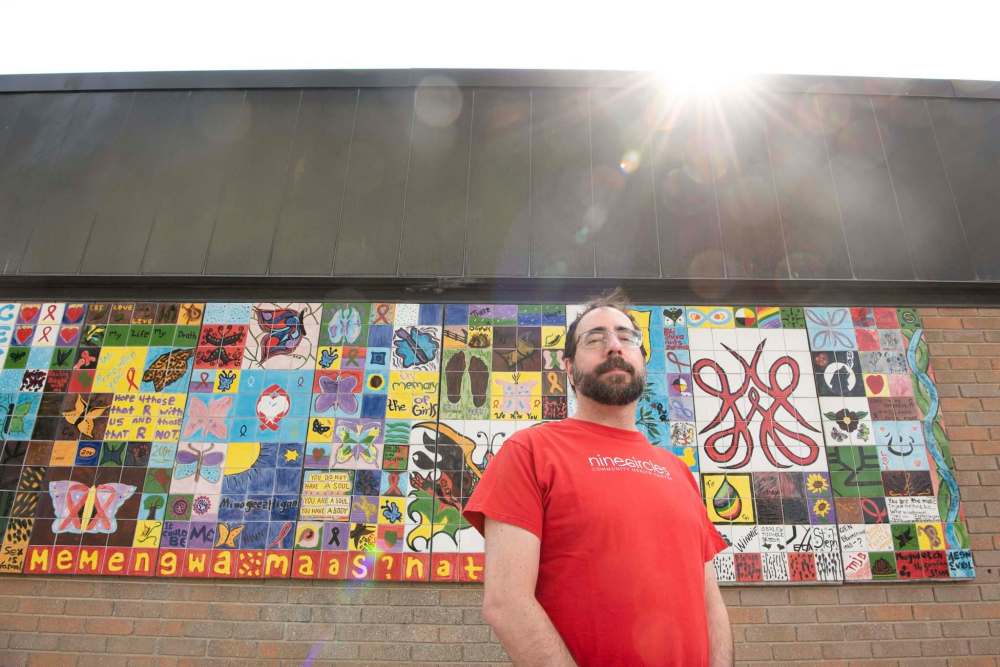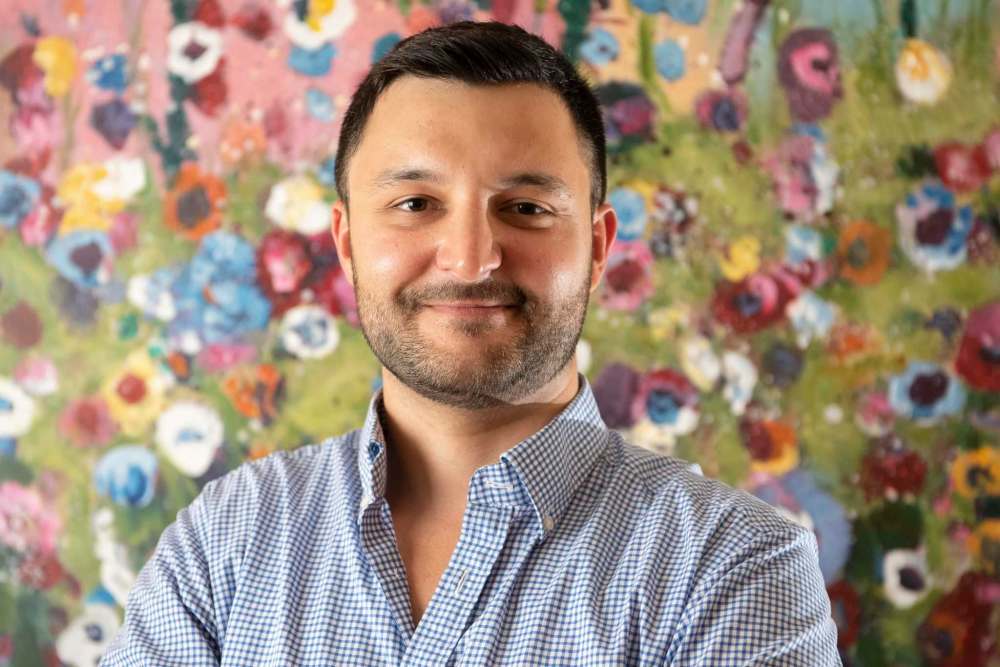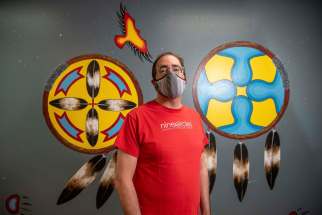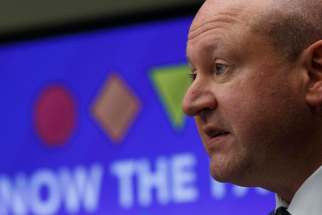Woefully unPrEPared Manitoba has Canada's second-highest rate of new HIV infections — and is the only place in the country that doesn't cover the cost of a drug that prevents the virus
Read this article for free:
or
Already have an account? Log in here »
To continue reading, please subscribe:
Monthly Digital Subscription
$0 for the first 4 weeks*
- Enjoy unlimited reading on winnipegfreepress.com
- Read the E-Edition, our digital replica newspaper
- Access News Break, our award-winning app
- Play interactive puzzles
*No charge for 4 weeks then price increases to the regular rate of $19.00 plus GST every four weeks. Offer available to new and qualified returning subscribers only. Cancel any time.
Monthly Digital Subscription
$4.75/week*
- Enjoy unlimited reading on winnipegfreepress.com
- Read the E-Edition, our digital replica newspaper
- Access News Break, our award-winning app
- Play interactive puzzles
*Billed as $19 plus GST every four weeks. Cancel any time.
To continue reading, please subscribe:
Add Free Press access to your Brandon Sun subscription for only an additional
$1 for the first 4 weeks*
*Your next subscription payment will increase by $1.00 and you will be charged $16.99 plus GST for four weeks. After four weeks, your payment will increase to $23.99 plus GST every four weeks.
Read unlimited articles for free today:
or
Already have an account? Log in here »
Hey there, time traveller!
This article was published 22/07/2021 (1601 days ago), so information in it may no longer be current.
Four days a week, people turn out to Nine Circles Community Health Centre on Broadway, seeking HIV and STI testing.
It’s a chance not just to offer a test, but also key information, and it can start with nurses asking a simple but critical question.
“Are you aware you can take a medication once daily to prevent HIV?”
It’s true, but for interested patients there can be a catch: the cost. Manitoba has the second-highest rate of new HIV infections in the country, yet it’s also the only province or territory in which pre-exposure prophylaxis — PrEP — to prevent new infections is not covered under the public Pharmacare plan.
It’s a treatment that could save lives, break transmission chains and, over time, save millions in public health dollars. That leaves local advocates and clinicians wondering why Manitoba has been slow to step up; Yukon, the second-last jurisdiction without coverage, began fully covering PrEP earlier this year.
“Are you aware you can take a medication once daily to prevent HIV?”
“With HIV, the numbers seem to be increasing in the province,” says Dr. Laurie Ireland, who leads the HIV program at Nine Circles. “We are quite concerned they are going to get higher and higher…. So if we’ve got something that could prevent this, why aren’t we utilizing it?”
Ireland is familiar with one case that came through the clinic within the last several years. A client was interested in PrEP, but could not afford the $300 monthly cost. Months later, the client came back and was in a better place to pay for the medication — but this time, their HIV test came back positive.
There is no way to know how many people in Manitoba have had a similar experience. But stories like this drift through the networks of clinicians and advocates who work with the most at-risk communities. The existence of effective prevention medication, they say, means that each new diagnosis is a missed chance to stop HIV.
“The question for all of them would be, did anyone ever tell them that PrEP was available?” says Albert McLeod, a human rights advocate and member of Nisichawayasihk Cree Nation. “Now you have HIV, which is incurable. Now we’re going to treat you, where you could have treated them before and they wouldn’t be positive.”
There’s no definitive data on the number of people using PrEP in Manitoba. The regimen, sold as a generic or under the brand name Truvada, is covered by some third-party insurance, as well as military and First Nations and Inuit Health Branch benefits. That still leaves many Manitobans most at risk for HIV unable to afford it.

“You see it in the rates here in Manitoba,” says Mike Payne, executive director at Nine Circles. “They’re getting younger every year, and (HIV infections are) significantly over-represented in racialized individuals and people living on the edge in low-income situations.
“PrEP could be exactly the right tool for them, but we have to figure out how to bridge the cost.”
In this, Manitoba is behind the times. Since 2012, when the first PrEP regimen was approved in the U.S., the drug has become a key weapon in the global fight against HIV. The World Health Organization and the United Nations urge expanded access, and mass education campaigns have launched worldwide.
Just this week, the U.S. federal government mandated that nearly all health insurers must fully cover not just the drug, but also the quarterly lab tests and clinic visits required to use it, at no cost to the patient. In Toronto, there have been many initiatives to expand use, including public campaigns and a dedicated PrEP clinic.
“PrEP works. What is needed now is bold action.” – Letter to Health Minister Heather Stefanson
Yet in Manitoba, there has been relatively little action to support PrEP education and access. So in April, a group of advocates and doctors sent a letter to Health Minister Heather Stefanson, urging the province to add PrEP to Pharmacare.
“PrEP works,” the letter concluded. “What is needed now is bold action.”
So far, though Payne has heard there’s support in government for the move, there’s been no official response.
In an email to the Free Press last week, a spokesman for Stefanson’s office said “work is underway to ensure that Manitoba’s coverage for PrEP more closely aligns with that of other provinces,” but that the timeline is not yet finalized.
To those working on the ground to slow the spread of HIV in Manitoba, that’s not fast enough.

“It’s been on the table for how many years now?” says University of Manitoba researcher Rusty Souleymanov, who studies marginalized communities’ health. “If the same issue is on my table for so many years I’d probably be fired for not doing my job.
“We are very, very behind in terms of campaigns, or any initiatives. We are at the point where if things don’t change, we are doing really bad in terms of our HIV epidemic. I would not be surprised if it gets much worse. PrEP is a central tool for HIV prevention in terms of how people can navigate it and how convenient it is.”
What is PrEP?
Pre-exposure prophylaxis (PrEP) is a daily medication that, when taken as directed, can prevent HIV infection. The regimen approved for use in Canada in 2016 comes in a pill form as a combination of two drugs, tenofovir disoproxil and emtricitabine. It is also known under the brand name Truvada.
According to Health Canada, when taken daily, PrEP can reduce the risk of getting a sexually-transmitted HIV infection by more than 90 per cent. Early data suggests it also has very high efficacy against transmission via sharing needles for injection drug use.
People who use PrEP are required to check in for STI, urine and blood tests every three months. It can be prescribed by any primary health care physician or at community clinics such as Nine Circles on Broadway.
He has some numbers to show the gap. In 2019, Souleymanov, an assistant professor at the U of M’s School of Social Work and research lead at the Village Lab, set out to learn more about the health of gay, bisexual, queer and two-spirit men in Manitoba, including their awareness of and ability to access PrEP.
What he learned was illuminating, though not necessarily surprising. The 2SGBQ+ Men’s Health Study, recently released, confirmed what Ireland and others had seen in practice. Of the study’s participants, 81.1 per cent said they were aware of PrEP, and 54.7 per cent were interested in using it. The top barrier they cited was cost.
There were others. While Indigenous men were most likely to have PrEP coverage, they were also the most likely to say they lacked information about the treatment. Meanwhile, participants reported that some primary health-care providers were hesitant to prescribe PrEP or lacked knowledge about it.
Taken all together, advocates say, those findings suggest that making PrEP key to Manitoba’s HIV strategy will take a multifaceted effort, one that includes education for both patients and doctors, as well as connecting with newcomer, Indigenous and other community groups to help share accurate information.

“I see commercials from the U.S. about PrEP,” McLeod says. “For me, as a Manitoba citizen, to have to get that information from another country is an example of the failure of the public-health awareness around HIV that our own health system is not doing that for all Manitobans.
“I find it such a slow, conservative approach to HIV in this province, and we need to get ahead of it, just like we did with COVID-19. People are going to have sex. Why is it a question in the 21st century that we’re still having this conversation about getting sexual-health information to the public?”
Still, as Souleymanov points out, it’s hard to start that conversation until everyone who wants PrEP can afford it.
From a dollars-and-cents perspective, covering PrEP is a no-brainer. Modern treatments transformed HIV from a terminal diagnosis to manageable one, saving lives and slowing spread. But managing it is expensive; each HIV infection may cost the public system more than $1 million over the course of a patient’s life.
“I find it such a slow, conservative approach to HIV in this province, and we need to get ahead of it, just like we did with COVID-19. People are going to have sex. Why is it a question in the 21st century that we’re still having this conversation about getting sexual-health information to the public?” – Albert McLeod
By comparison, PrEP is a bargain. Cost-benefit analyses have consistently found that providing it to individuals at high risk for HIV can result in significant health-care savings, in part because while an HIV infection is lifelong, a person may only need to use PrEP during a shorter period of time, when they are most at risk.
There may be other benefits, too. As Souleymanov points out, people on PrEP are more likely to be linked to the health-care system, since the medication requires quarterly blood and STI testing. That stronger connection with medical professionals could help pave the way for better overall health.
Still, it will take work. About five years ago, shortly after PrEP was approved in Canada, McLeod led a workshop on the medication at Thunderbird House. People attended, he says, and there was interest. But he also got a sense of the barriers that went beyond cost, especially for marginalized people.
“When you have a drug like Truvada, there’s all types of layers that have to be considered,” he says. “You need those social supports around it. You need emotional and mental supports around it. You just don’t give people a drug and say, ‘Come back in six months and let me know how’s it going,’ right?”
melissa.martin@freepress.mb.ca
Our newsroom depends on a growing audience of readers to power our journalism. If you are not a paid reader, please consider becoming a subscriber.
Our newsroom depends on its audience of readers to power our journalism. Thank you for your support.
History
Updated on Thursday, July 22, 2021 9:53 PM CDT: Fixes typo.









